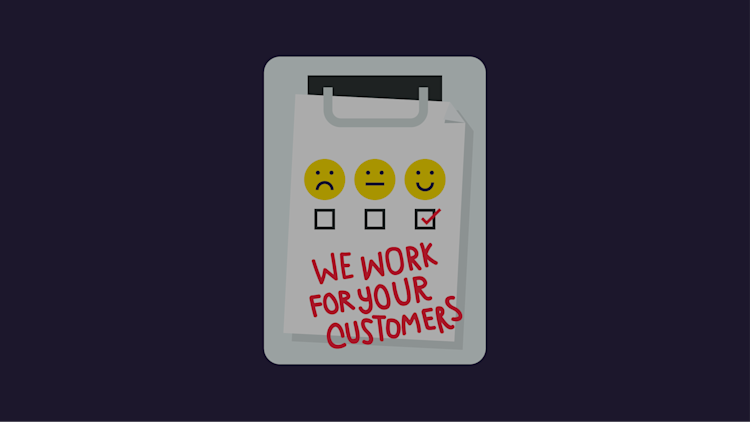Insights
Customer Interactions: Time To Get Personal

Personalization is something customers have gotten so used to by now, that it has become an expectation. They want an experience that is tailor made to fit their preferences, only showing them things that are relevant for them. By now we have helped many businesses with implementing personalization and know like no other that making personalization work seamlessly is becoming more and more challenging. And as personalization is a big topic in the world of tech, this year Amsterdam got a new conference devoted entirely to it.
At the Zero-In Conference, the speakers and panelists explored personalization from different perspectives; from the role of AI in making personalization successful to what we should pay attention to after the GDPR laws go into effect. The day proved to be a confirmation of what we’ve learned over the years about things to keep in mind when implementing personalization in your business.
Developing a single customer view
Nowadays customers are active on many different channels, making delivering a personalized experience more complicated. The data points are often fragmented, increasing the difficulty of developing a single customer view. This means having a single record for each of your users that consists of aggregated data and where it originates from different points. Such a consolidated representation proves to be particularly valuable when making use of multichannel marketing, because it allows better prediction of what each of your users wants to see and how they prefer to interact with your service. Hereby, it’s important to keep cross device tracking and privacy in balance. Users don’t want to be tracked to see intrusive ads, but do want the data that they freely give away to be used purposefully. Take an airport app as an example; we don’t want to have to fill in the booking number every time we want to check the details of our flight. This is something we kept in mind while working to improve Schiphol’s passenger journey; such information is something customers want the app to remember so they can enjoy a seamless user experience.
Optimizing the customer journey through AI
AI is disrupting industries, because of which many view it as a silver bullet. And even though AI can be a big help in pre-processing data and reducing complexity, you can’t leave everything up to it. It should be used as help in guiding the narrative on the path to purchase and understanding customers on a macro level, so the time of human marketers can be spent on understanding and supporting smaller, individual communities. Many customer interactions can be easily automated with the help of AI, without making the conversations sound like they’re led by a bot. Similarly, AI can also aid in optimizing customers’ journey by identifying the sequence of messages to send to customers and determining through which channels they should be delivered.
What about users who don’t agree that more personalization means a better experience? AI is also useful in this case, because it gives us a chance to find out what level of personalization customers want. Especially now, in a time when users are becoming more aware of their rights and their data being used in ways they didn’t comply with, AI is a good tool to adapt to their personalization level preferences. But as AI has not reached a desirable level of computational creativity yet, it’s best not to have high expectations when it comes to letting it create new narratives. It will take a while before AIs perfect the art of creativity, considering that for now AI can only mix existing narratives based on the sample data it has been fed.
GDPR is changing the way we use data
Since personalization is all about putting users’ data into action, won’t the GDPR laws make it much more difficult to achieve? The answer is not necessarily. GDPR should also be seen as an opportunity to build a stronger relationship with your customers. By putting the focus on data subjects, it’s creating a different dynamic, as the main point of the new legislation is making your customers understand what’s happening with their data. That’s why reminding your users of their rights and asking their consent again, has the potential to strengthen their feeling of trust and consequently their relationship with your brand. This is something we’ve done for Elsevier, by making Elsevier’s forms both user-centered as well as GDPR proof. They can start building a relationship with their customers from the very first steps of using their service.
GDPR is also a great opportunity to get creative. Showing your users that you’re complying with the law doesn’t necessarily have to be through text (which let’s face it, not many read), it could also be done in a more visual manner, like through visuals or video. So it’s all about finding ways of informing your users that are in line with your brand and their preferences. And although most requirements of GDPR for the most part speak for themselves, the experts admitted that the notion of ‘legitimate interest’ can be quite confusing. It’s seen as the biggest grey area, as it’s not defined clearly it lends itself for interpretation and demands careful consideration when relying on it.
In short, the Zero-In Conference confirmed that if you haven’t already build a relationship with your customers on a more personal level, it’s time to do so. Even though customers are making use of many different channels and the GDPR regulations are changing the ways we can put data into action, it’s also a good opportunity to innovate and make your service more user-centered. And if you’re not sure how to do this, feel free to contact us.
The next Zero-In Conference is in Amsterdam on April 18th, 2019. This conference is powered by by Uprise Festival, Europe’s original Tech Festival for Innovation, Founders and showcasing growing companies held in Dublin on October 17-18th.